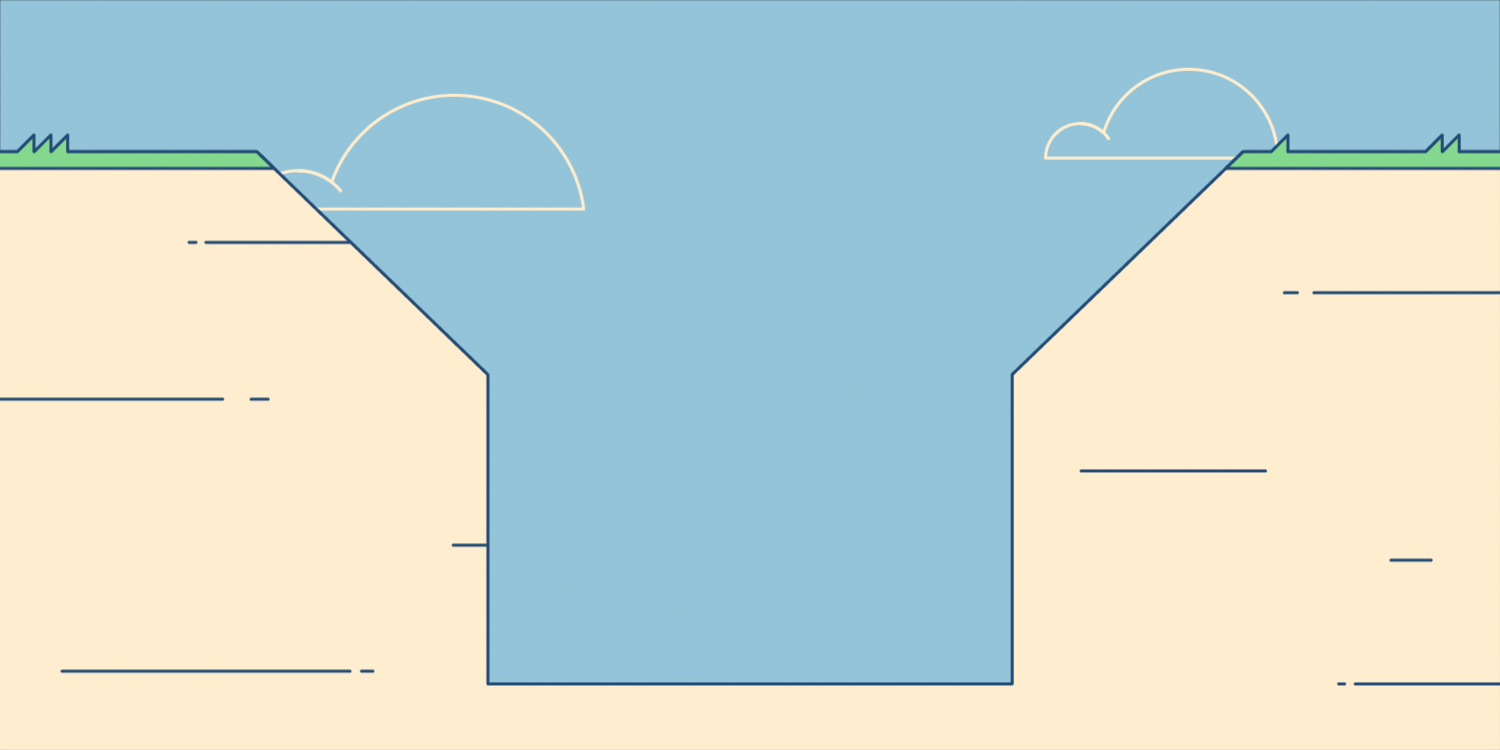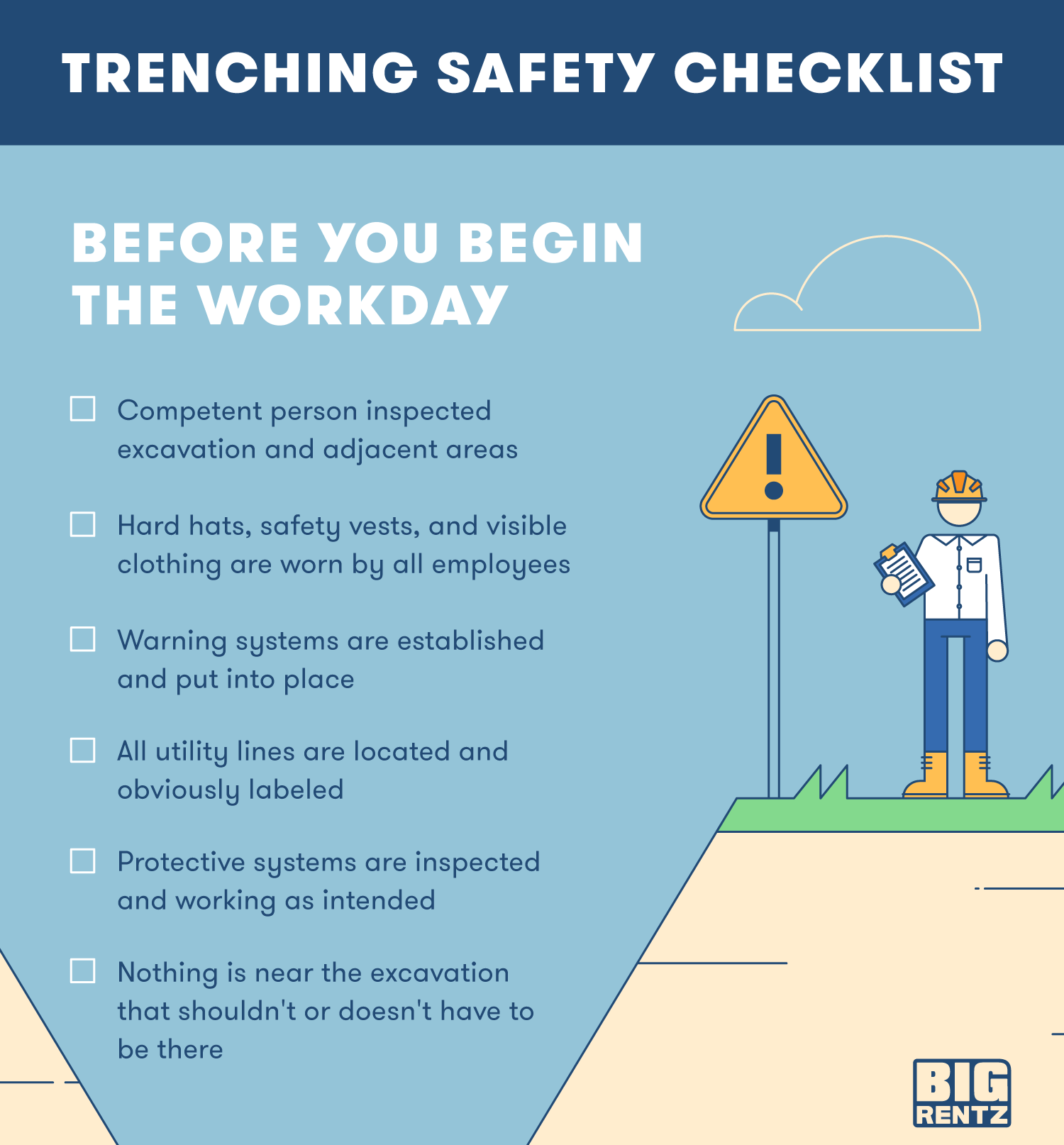Trenching is an important part of any construction project. It involves digging and removing the dirt, forming a narrow depression into the ground, which is then utilized for a variety of projects.
They’re used for a wide variety of civil and engineering projects, including laying pipes and telephone wire. In fact, trenching is so critical to construction projects, that there are different methods and a variety of trenching equipment that can be utilized.
As with anything in the construction industry, though, trenching can be dangerous, and sometimes even fatal. That’s why it’s important to practice proper trenching practices to improve worksite safety.
Take a look at these essential trenching safety tips that your team should follow:
1. Install Protective Systems
Protective systems keep workers safe from cave-ins and deaths, in fact, preventing injury and death from cave-ins is one of OSHA’s primary goals. A protective must be put into place if the trench is deeper than 5 feet; if the trench is deeper than 20 feet, protective systems must be designed by a professional engineer.
The most common protective systems to prevent cave-ins are:
Sloping and Benching
Sloping refers to cutting back the trench wall at an angle to create a slope. Benching is the act of creating steps (like long benches) to travel up and down the earthen wall. Both systems can be used by themselves or in conjunction with one another.
Shoring
Shoring means that a support system made of timber, mechanical parts or hydraulic systems that help prevent a cave-in are installed. They help keep the Earth in place and provide an extra layer of protection. It is purely meant to help prevent a collapse.
Trench Shield
Unlike shoring, trench shields, also known trench boxes, aren’t meant to prevent a cave-in or collapse, but rather protect the worker should one occur. Trench shields are great for continuous trenching, like pipe laying.
A few things to consider about trench shields:
- Always follow the manufacturer’s warnings and labels
- No one should be in the shield when it’s being moved
- Not all shields are designed to be stacked on top of one another
- The empty spaces between the shield and the trench wall should be filled to prevent displacement
2. Use Alternative Trenching Methods
Since trenching is a necessary, but dangerous aspect of construction, you never want to do more than you need. Nevertheless, due to the dangers surrounding the method, the CDC recommends using a different method of excavating instead of trenching for better safety.
Here are the common alternative trenching methods:
Directional Boring
Directional boring utilizes a boring machine that digs into the ground at an angle without disturbing much of the surface. First, a small pilot hole is created for direction; the bore (hole) is enlarged to the size that will fit the pipe. After that, the pipe is pulled through the hole.
Directional boring helps eliminate most of the dangers that are present with trenching.
Pipe Ramming
Pipe ramming, also known as pipe jacking, is used in mainly horizontal projects; a pipe is hammered into the ground using a percussive instrument. This method works best with larger pipes and for surfaces that may have trouble settling when other trenchless methods are used.
Utility Tunneling
Utility tunneling is similar to pipe jacking, except that linear plates are needed and workers enter the borehole. The tunneling process can either be done by hand or by a boring machine.
Utility tunnels are generally used for colder climates and on large industrial and commercial sites so as to not disrupt above-ground pedestrian or vehicular traffic. Regular inspection, maintenance and repair are needed.
3. Conduct Atmospheric Testing
Atmospheric testing is required whenever a trench or excavation goes deeper than 4 feet and it’s suspected hazardous atmosphere is present. This is due to the present danger of oxygen deficiency and the presence of dangerous gases, such as carbon dioxide and methane.
If a hazardous atmosphere is present, or it’s reasonably suspected that it is, then the employer must provide the workers with emergency rescue equipment, including a breathing apparatus and a basket stretcher.
4. Beware of Falling Loads
OSHA requires that all workers need to be standing away from lifting or digging equipment that is being loaded or unloaded as they are at risk of being exposed to falling loads.
Likewise, no work should be done under suspended or raised loads due to the dangers of falling loads present. In fact, OSHA requires worksite equipment to be stored at least 2 feet away from the trenching edge.
5. Routinely Inspect Trenches
A competent person must inspect the trenching site for any possibility of cave-ins or collapses daily. Inspections must begin before the start of work and as needed throughout the shift.
Inspections also have to happen after natural events, like a rainstorm, or other forms of work, like blasting work. If any unsafe conditions are found, all workers must be removed from the area until all safety precautions are met.
6. Install Safe Access and Egress Points
OSHA standards dictate that employers must provide easy modes of access and egress to the trench — such as ladders or ramps — for trenches deeper than four feet. The entrances and exits must also be at least within 25 feet of an employee at all times.
7. Locate Utility Lines Before Digging
Prior to any sort of digging, excavators are legally required to contact local utility workers. Just call your local 811 agency and allow the local utility companies the time to mark their lines.
Underground utilities can pose an incredible amount of danger to workers. If workers don’t know where they’re digging, they can accidentally hit a gas, electrical, water, sewer or phone line. Doing so can result in catastrophic injury: striking a gas line can cause a dangerous gas leak.
Having all utility lines marked ensures that none of the lines will be struck by the digging equipment. On top of the dangers it presents, digging without calling can result in fines and other penalties depending on the area.
8. Assign a Competent Person
A “competent person” as described by OSHA is someone who has been designated by the employer for the express purpose of designing, inspecting and supervising the trench. This person must be a professional engineer and should be trained in:
- Identifying possible and current dangers
- Dangerous and hazardous working conditions for employees
- Eliminating dangers promptly
Trenching safety is reliant on these people due to the highly technical nature of trenching. Because of that, a high level of training and experience is needed for these appointed employees.
9. Install Proper Safety Signs
Installing signs can play a huge role in preventing intense or fatal injuries. Adequate warning signs can alert workers entering the worksite along with any pedestrians who might accidentally wander by.
The truth of the matter is that not everyone is a trained construction worker: an everyday person may wander into the worksite and not know where they are going. Having a big and noticeable warning sign that says “DANGER: OPEN TRENCH” can make all the difference.
10. Practice OSHA Provided Trenching and Excavation Safety
If someone isn’t careful, trenches can cause a serious injury, whether on a job site or elsewhere. The same can be said about any type of excavation work.
The dangers they pose can be severe, if not fatal. Here are some trench and excavation safety guidelines from OSHA to exercise:
- Never enter an unprotected trench
- Trenches deeper than 5 feet need to have a protective system in place unless they are made of stable rock
- Don’t place any excavated soil/material within 2 feet of the trench edge
- Don’t stand near any vehicle being loaded or unloaded
- Always wear proper safety equipment
- Use a checklist to conduct safety inspections
Common Trenching Hazards
Trenching poses many dangers that can be outright fatal. Big machines, large holes and an assortment of potential hazards under found in different types of foundations can be a recipe for disaster.
Here’s a list of things to look out for:
- Cave-ins
- Falling debris or equipment
- Workers slips, trips and falls
- Flooding or water accumulation
- Hazardous atmosphere exposure
- Mobile equipment around the trench
Knowing about the dangers trenching can cause is just as important as preparing for them. Before any work begins for the day, you should use a similar checklist like the one below to make sure your workers are safe.
The Difference Between Excavating and Trenching
OSHA has defined excavation as any man-made cut in the Earth’s surface. Excavating can be used as an umbrella term for any kind of cut or precision digging used in construction.
Trenching is a specific form of excavation work; it involves a precise, narrow excavation (in relation to its length) made below the surface. Generally speaking, the depth of the trench is bigger than its width, but the width doesn’t exceed 15 feet.
Trenching can be some of the most hazardous work on a construction site, according to OSHA. Learning proper trench safety can help keep you on track (or trench really fast) for your trenching project while providing the safest worksite possible. Anyone can suffer a serious injury if they’re not careful.




















